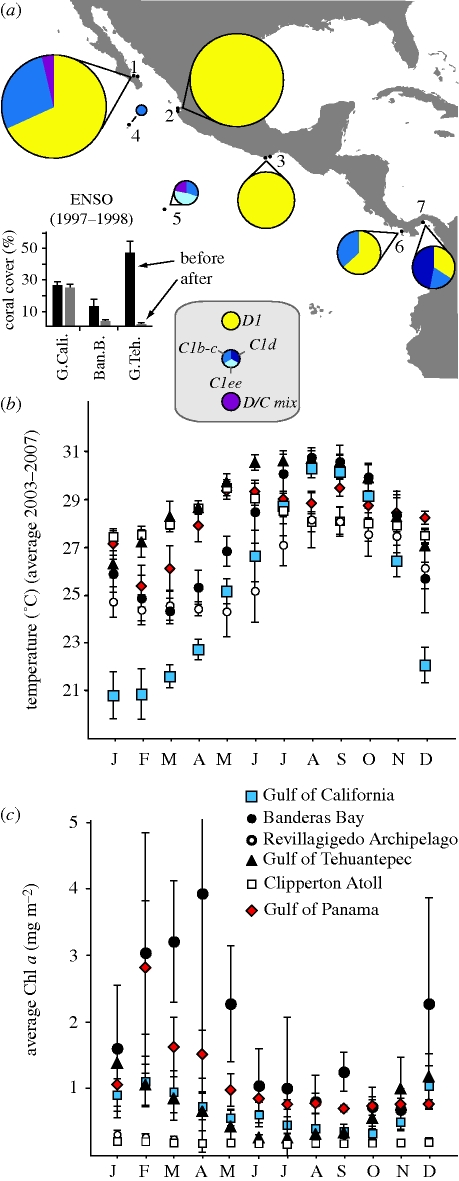Figure 3.
(a) Geographic patterns in the relative dominance of colonies with Symbiodinium D1 surveyed a decade after the 1997–1998 ENSO. Analyses of individual Pocillopora from (1) The Gulf of California (n = 201); (2) Banderas Bay (n = 179); (3) western Gulf of Tehuantepec, Oaxaca (n = 82); (4) Revillagigedo Archipelago (n = 3); (5) Clipperton Atoll (n = 21); (6) Gulf of Chiriqui (Uva Island), Panama (n = 41; Baker et al. 2004); and (7) Gulf of Panama (n = 42). Loss of live coral cover was most severe among communities of Pocillopora from central (Banderas Bay) and southern Mexico (Gulf of Tehuantepec) sites during the 1997–1998 ENSO (inset modified from Reyes-Bonilla et al. 2002). The average monthly values (±s.d.) between 2003 and 2007 of SSTs (b) and chlorophyll a concentrations (a proxy for turbidity) for each location based on satellite imaging.

